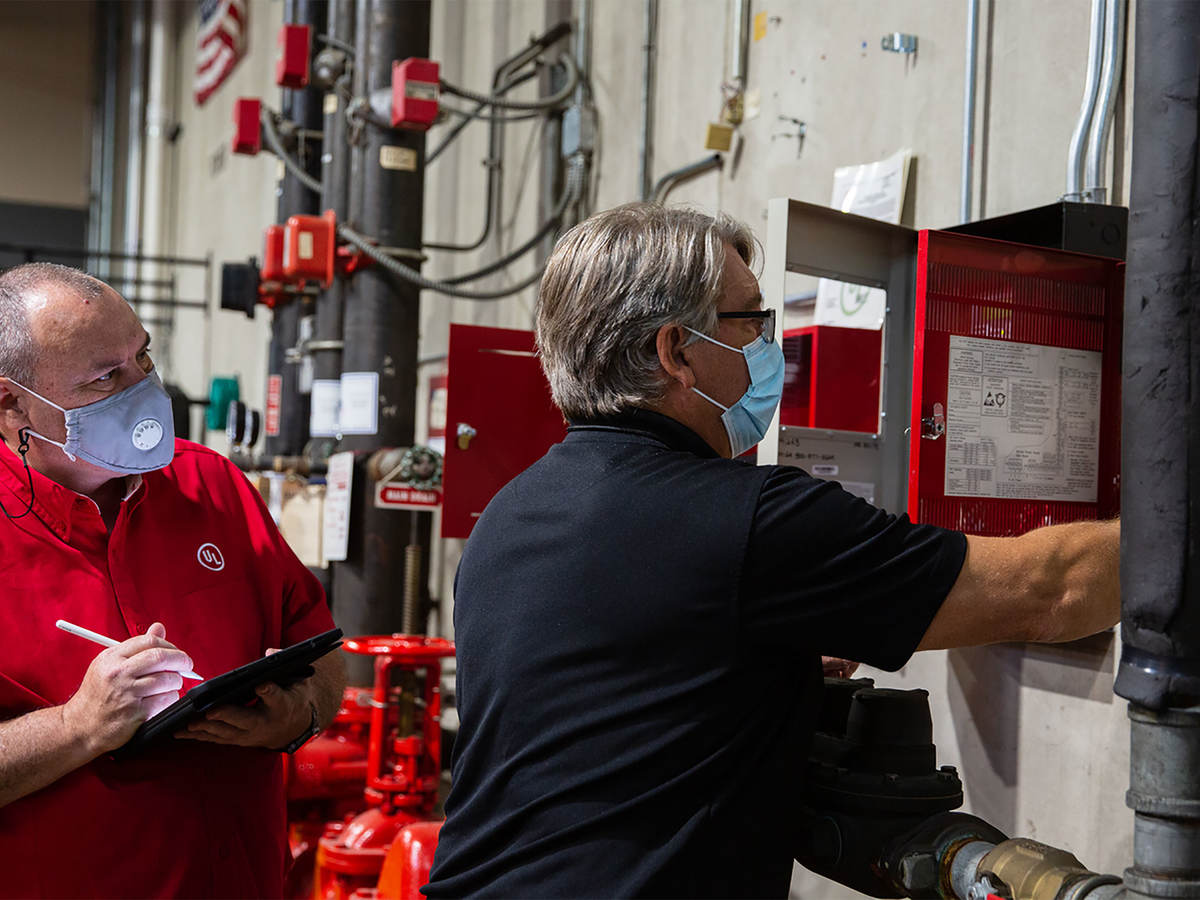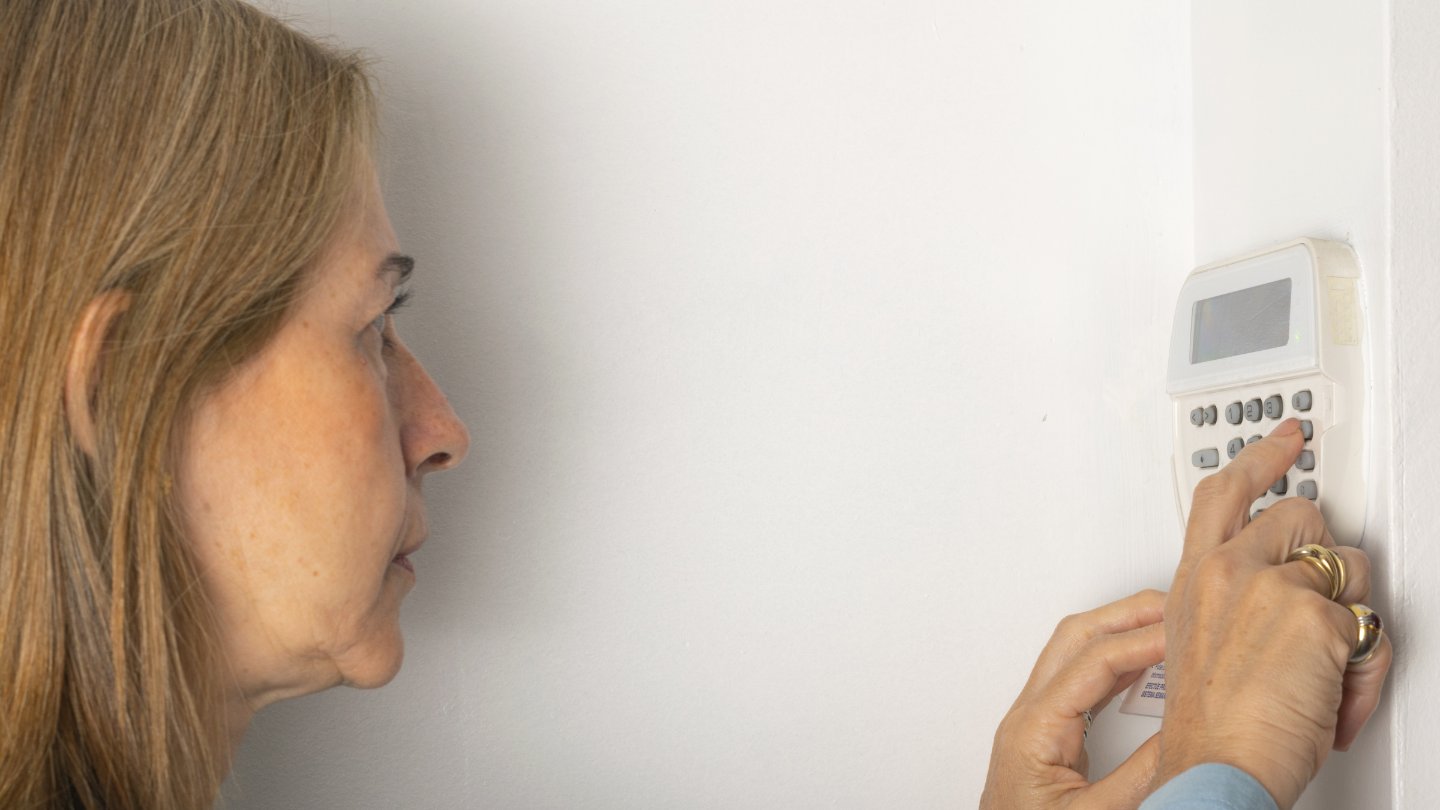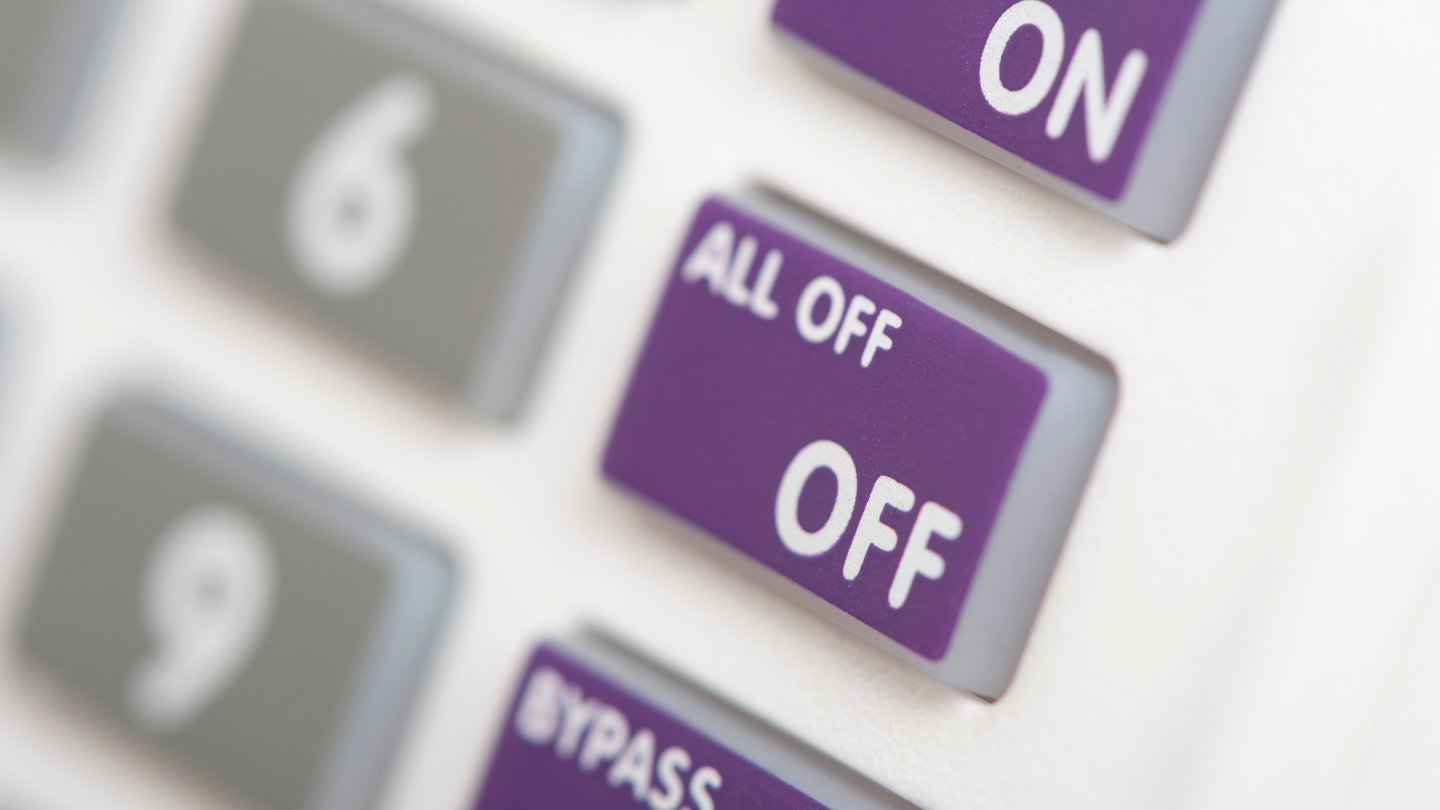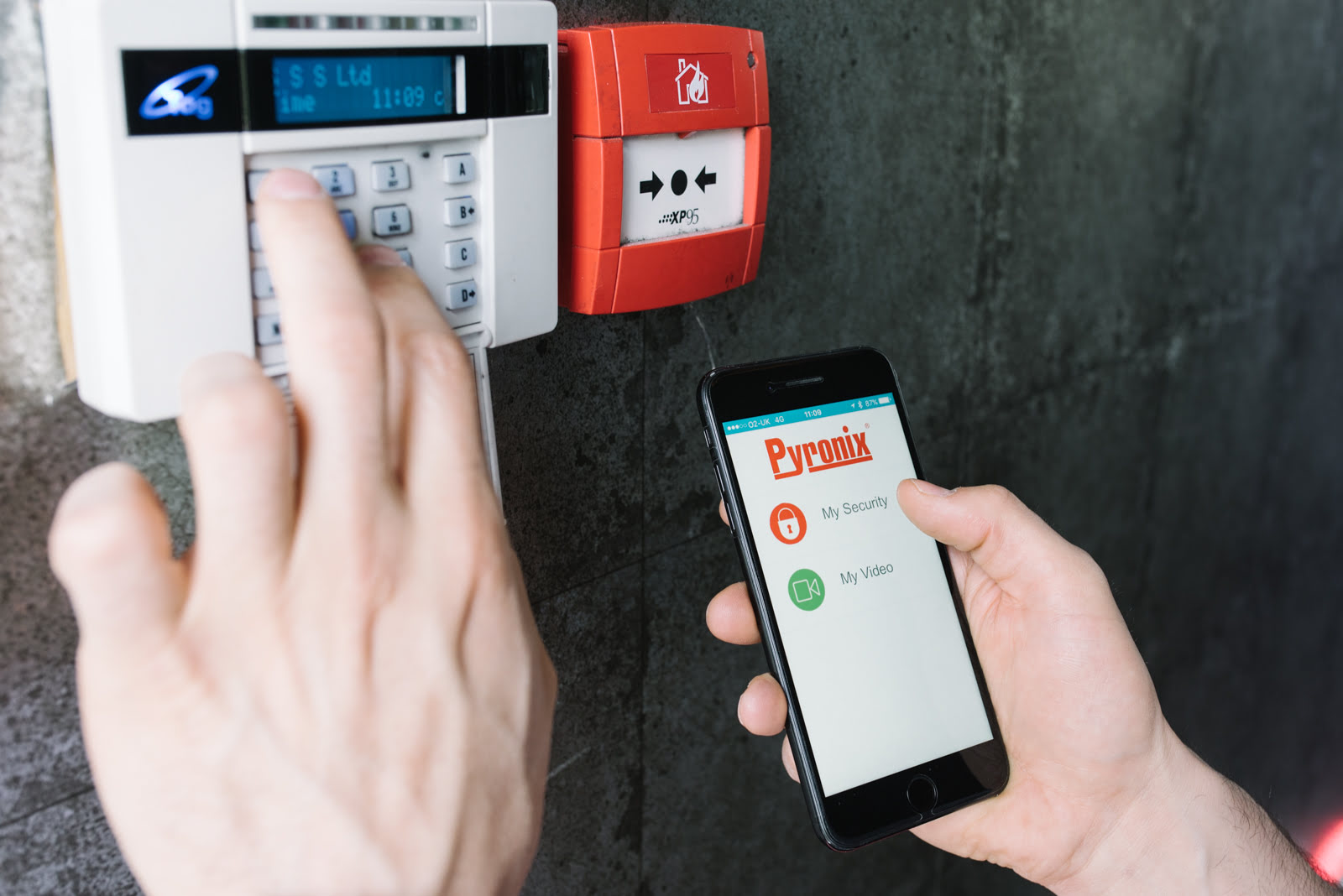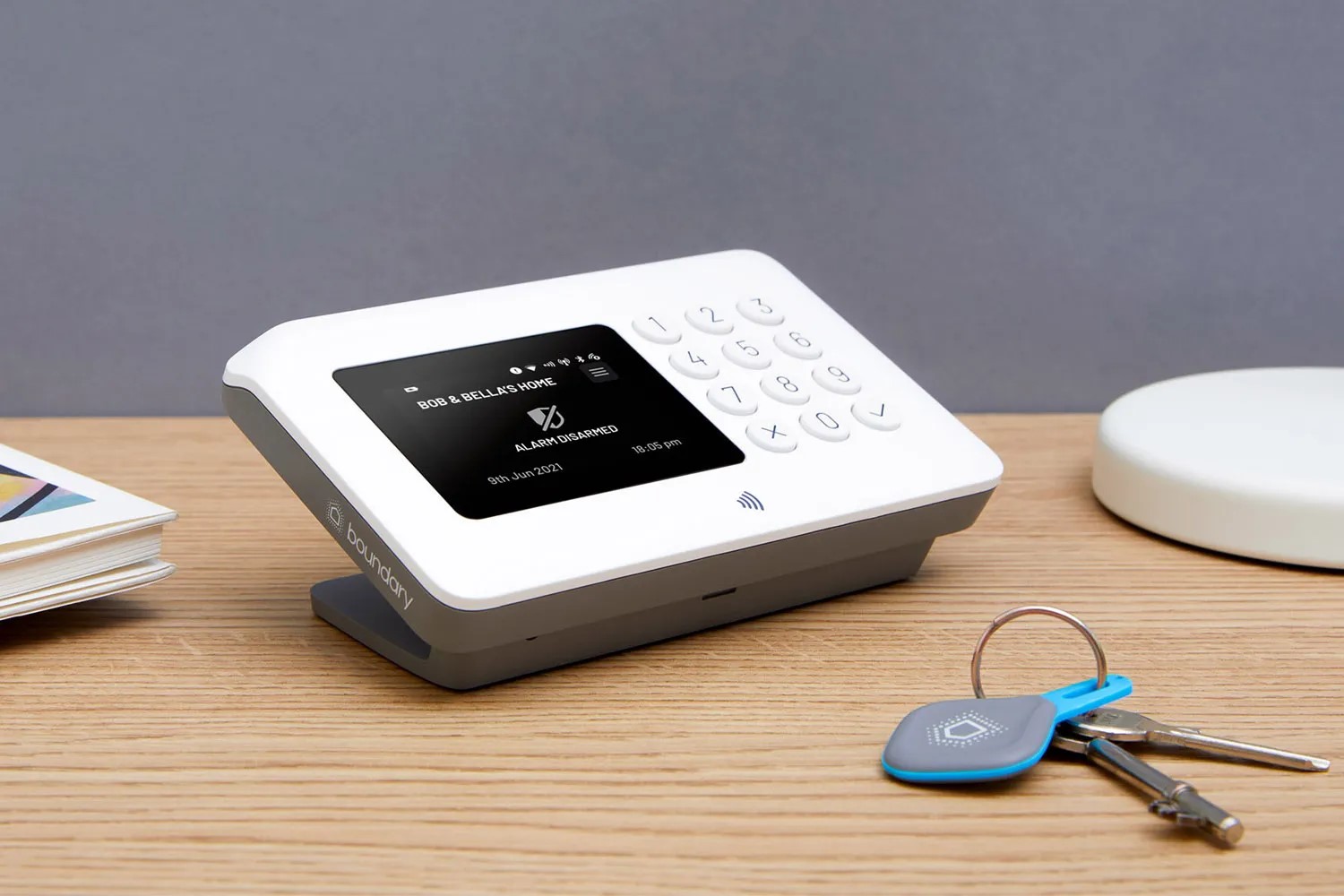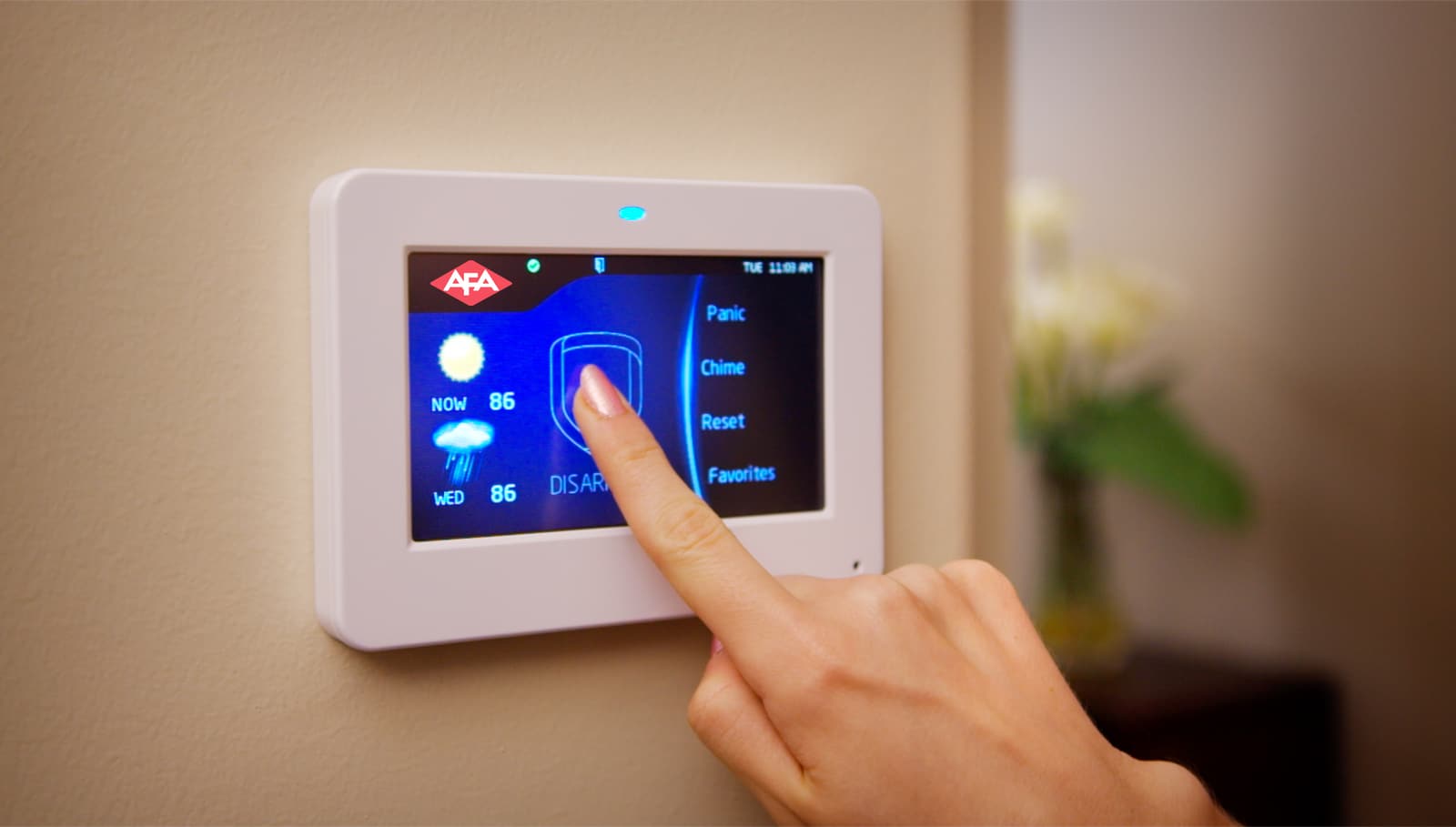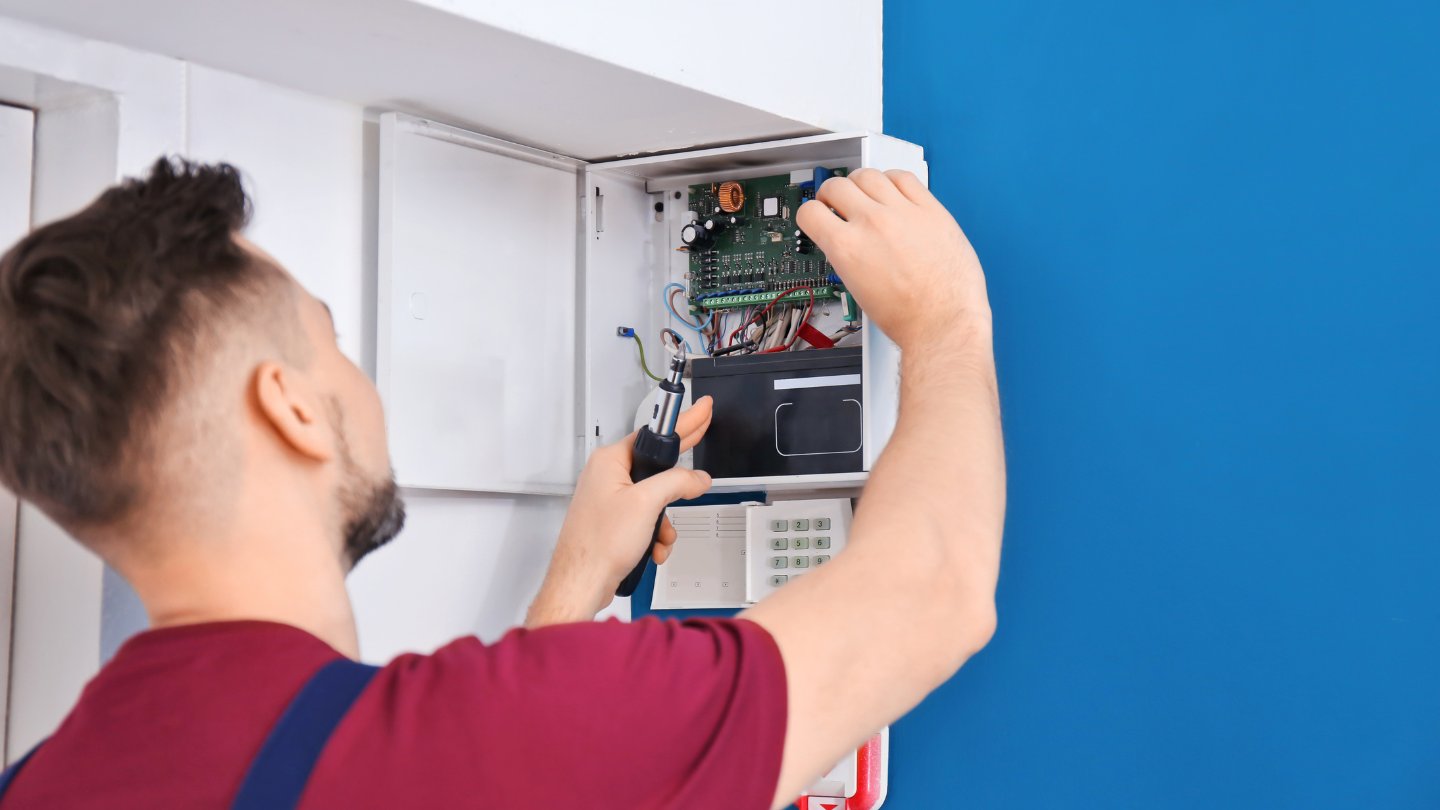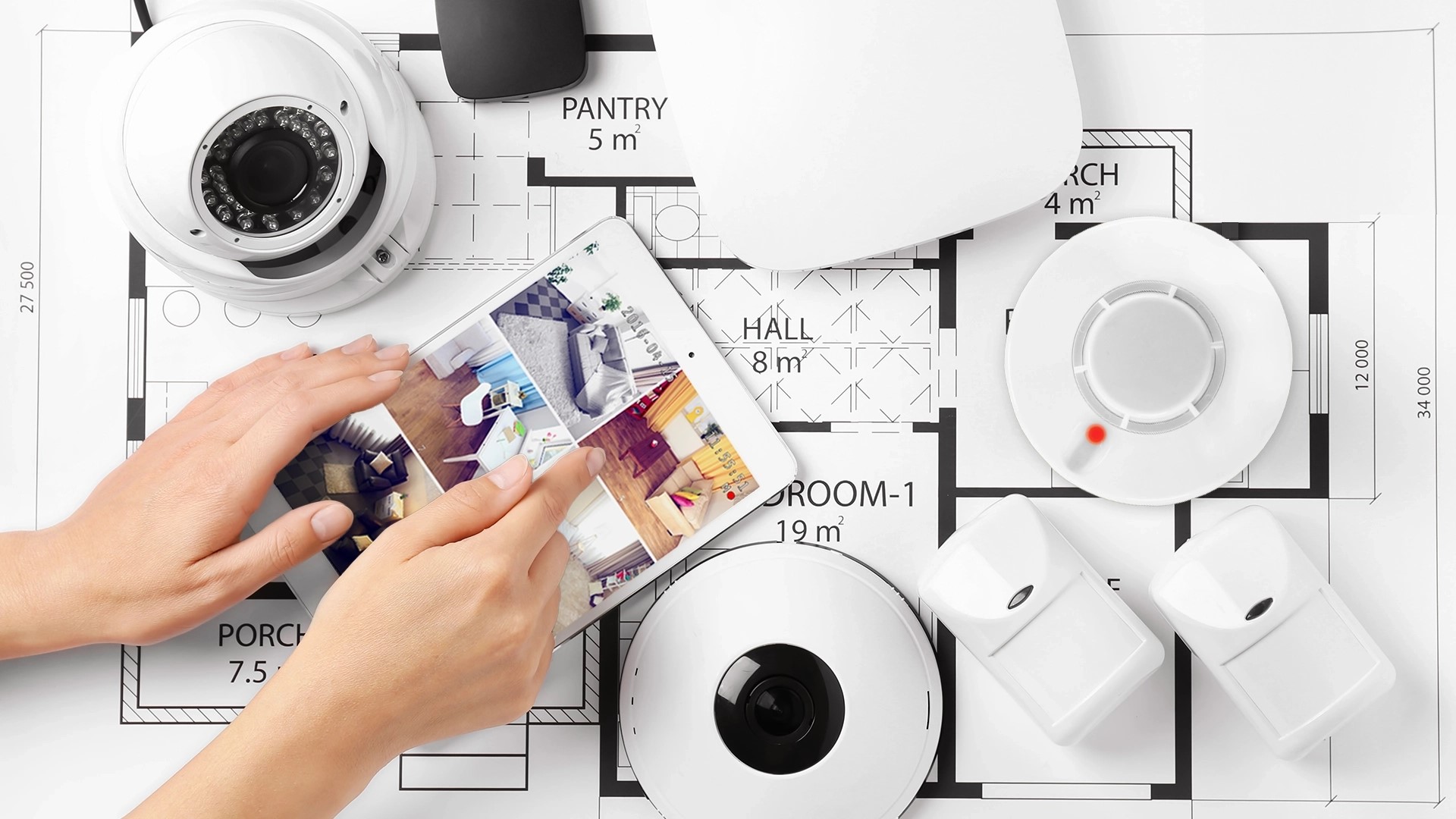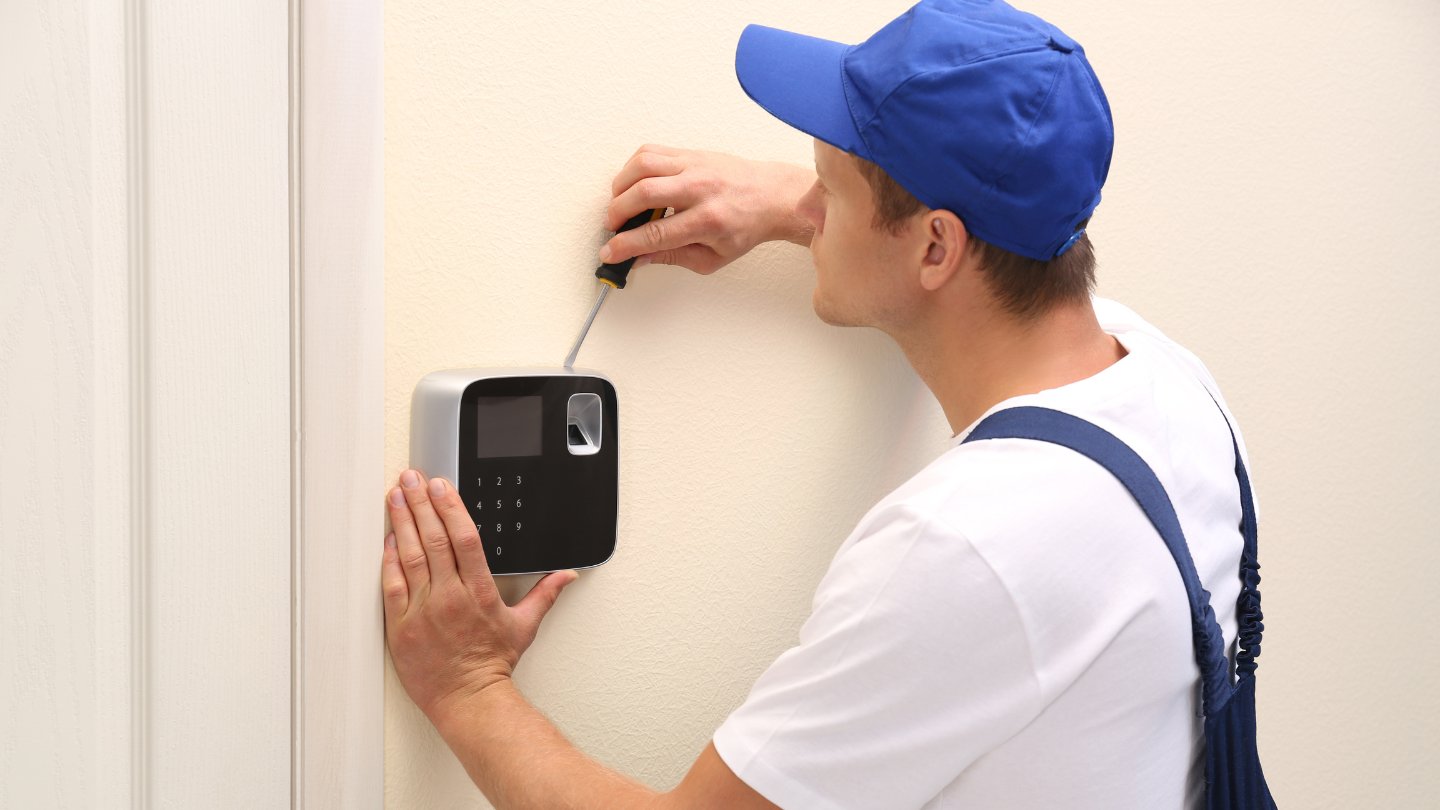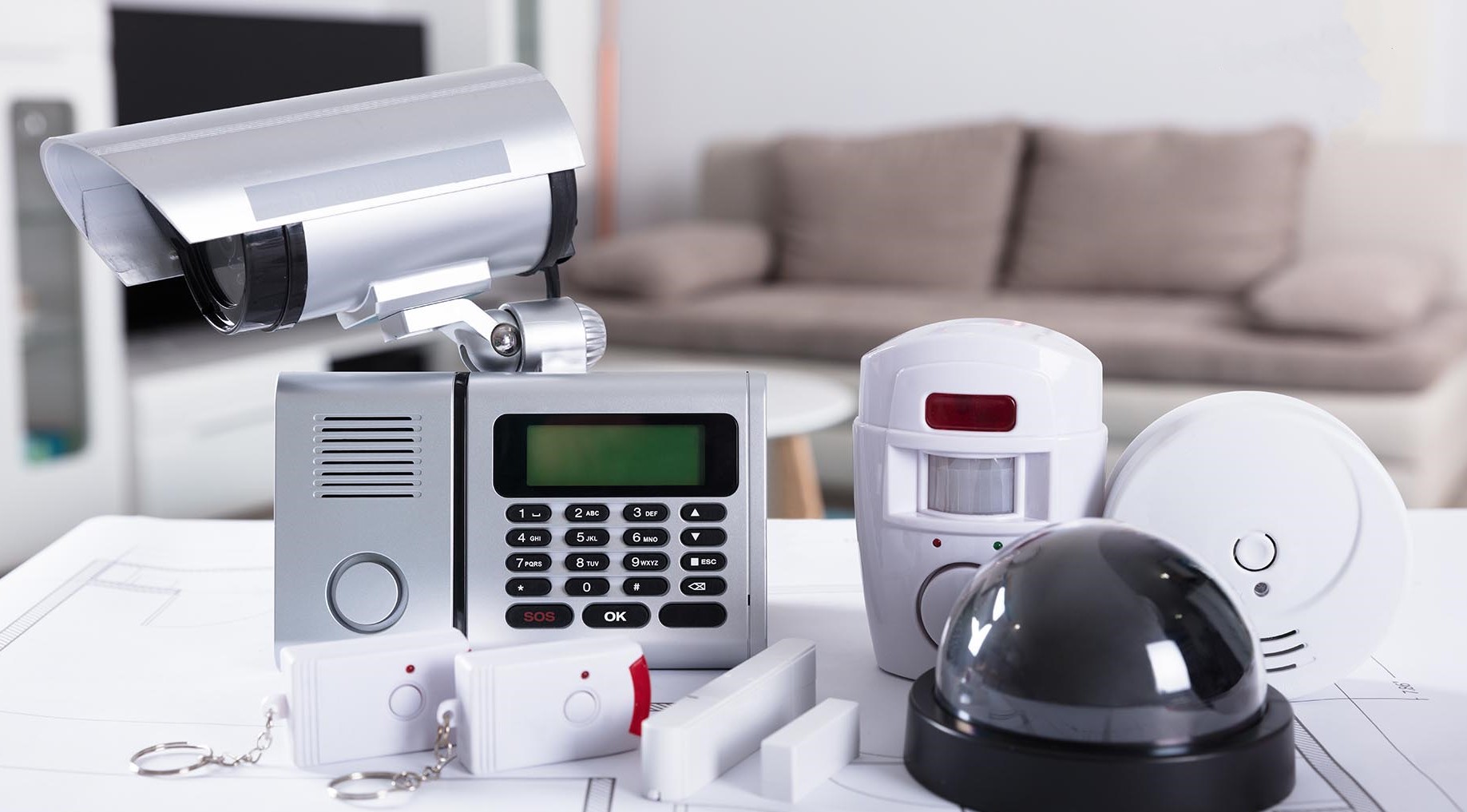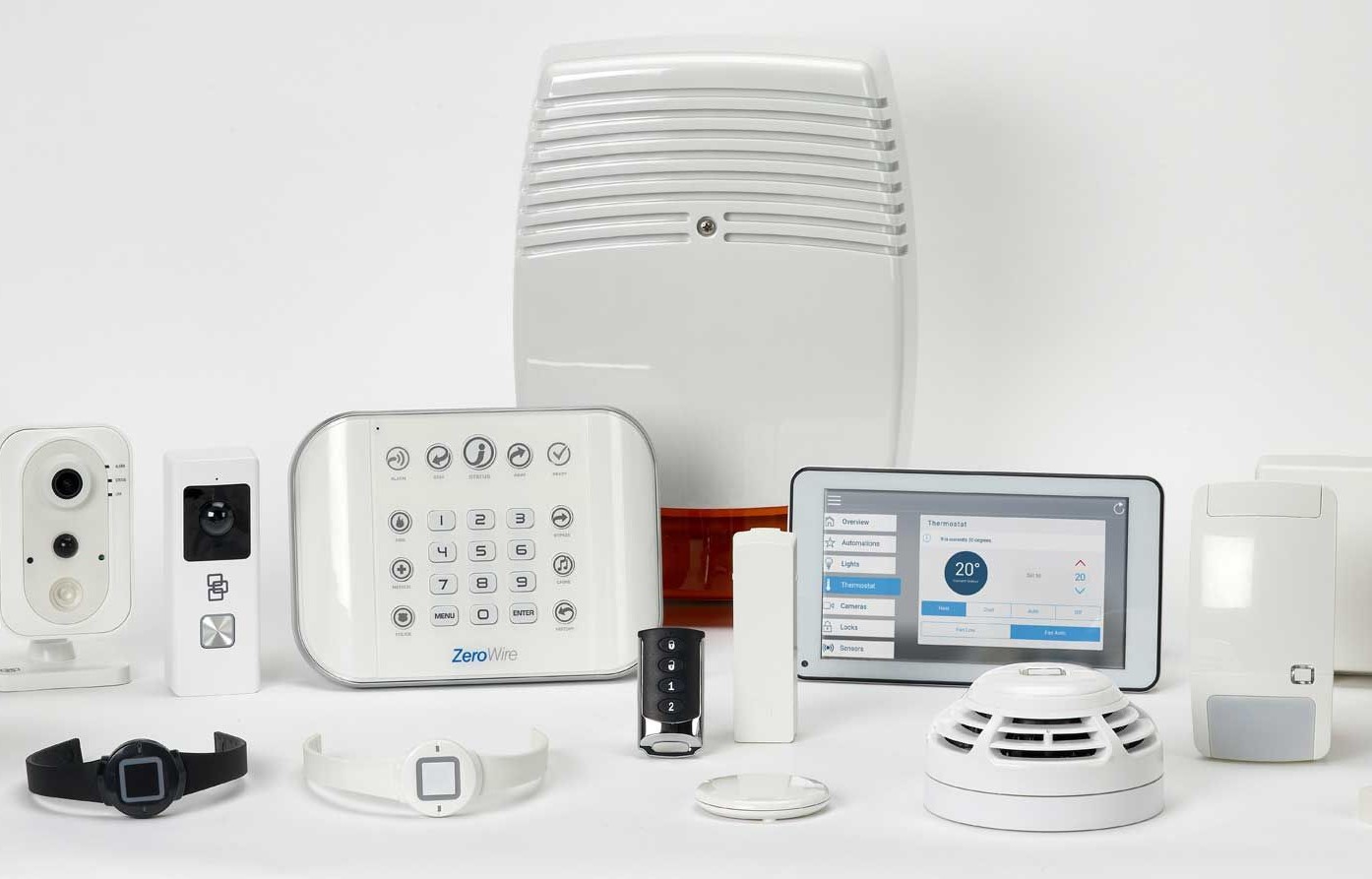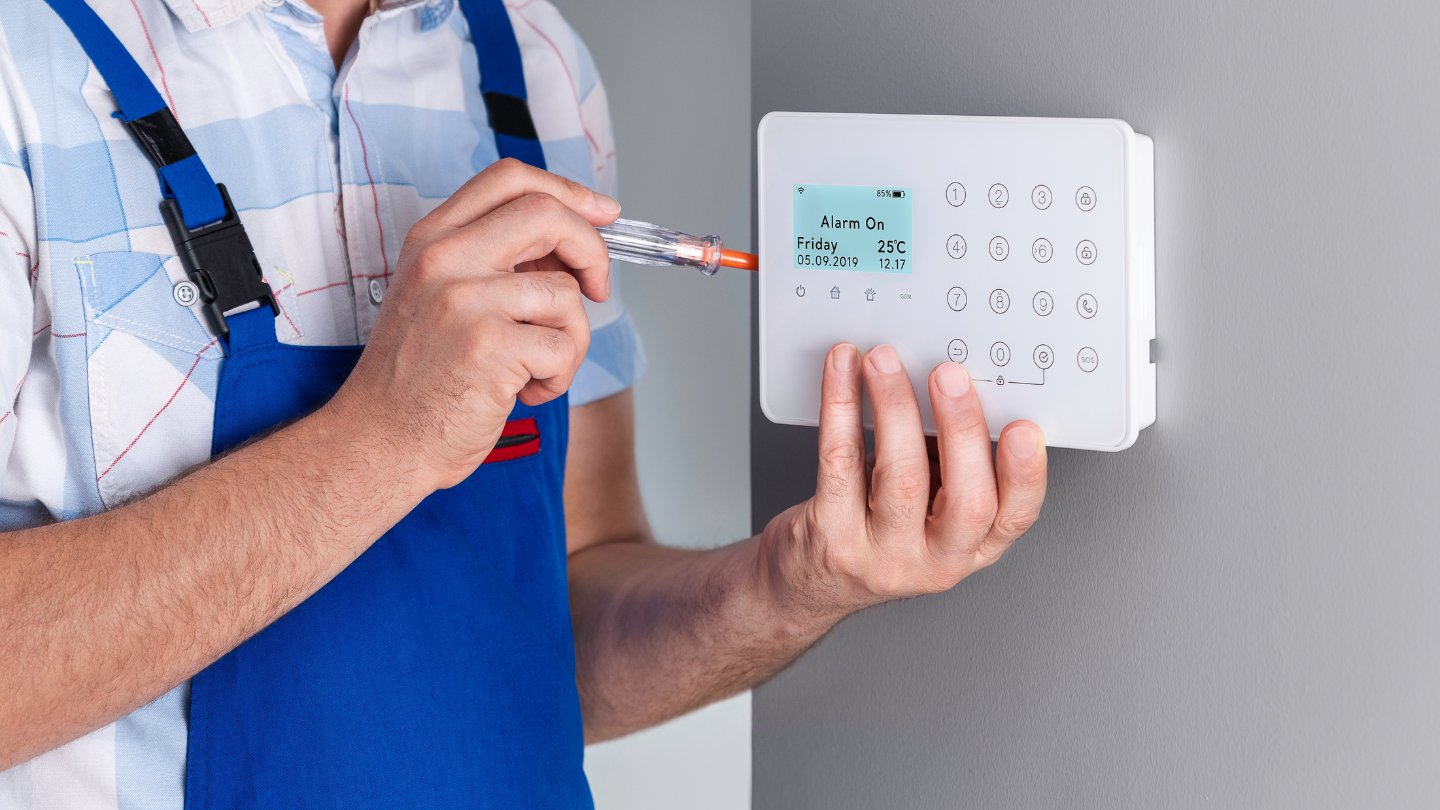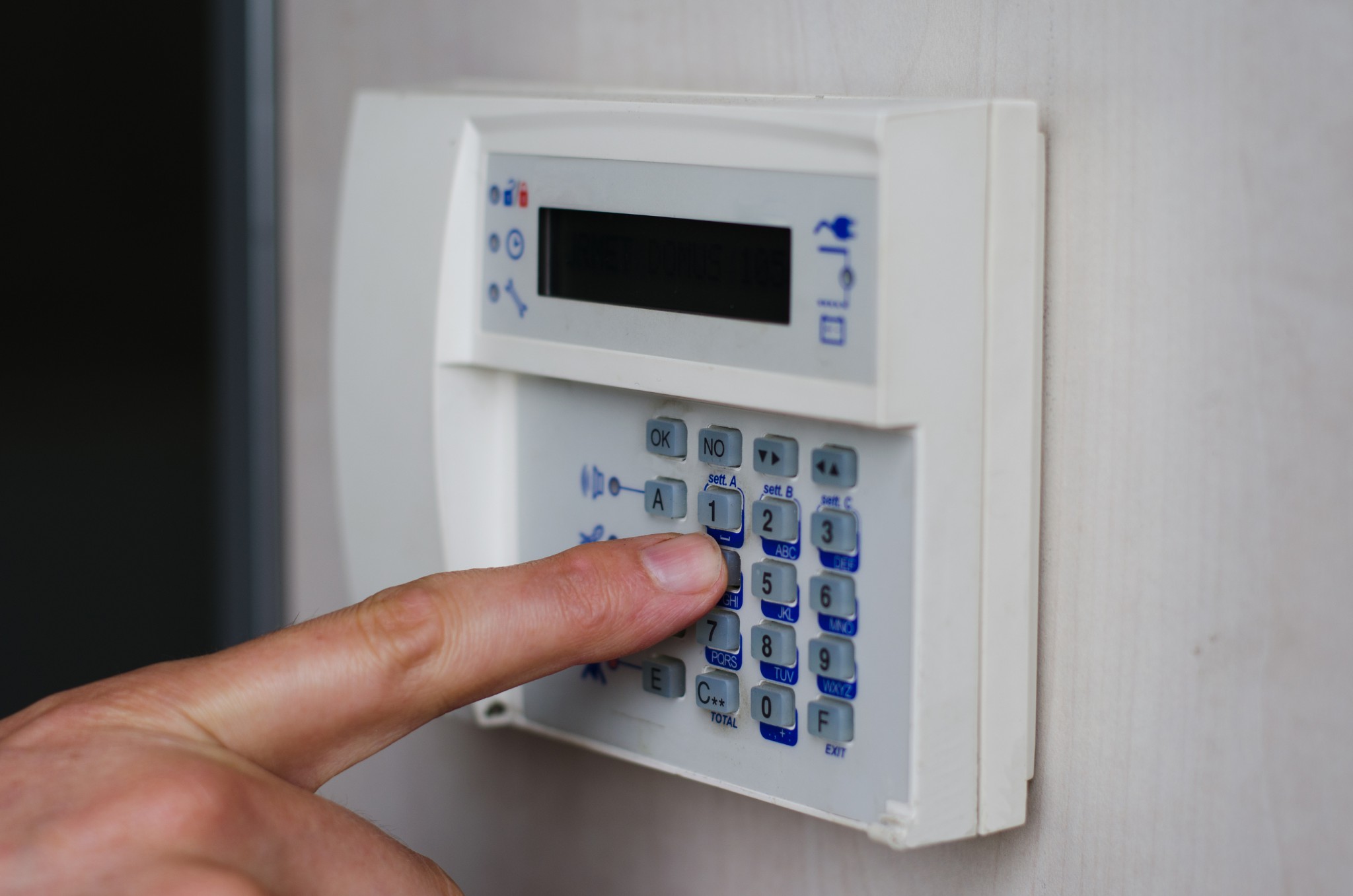Home>Home Security and Surveillance>What Is Local Burglar Alarm?
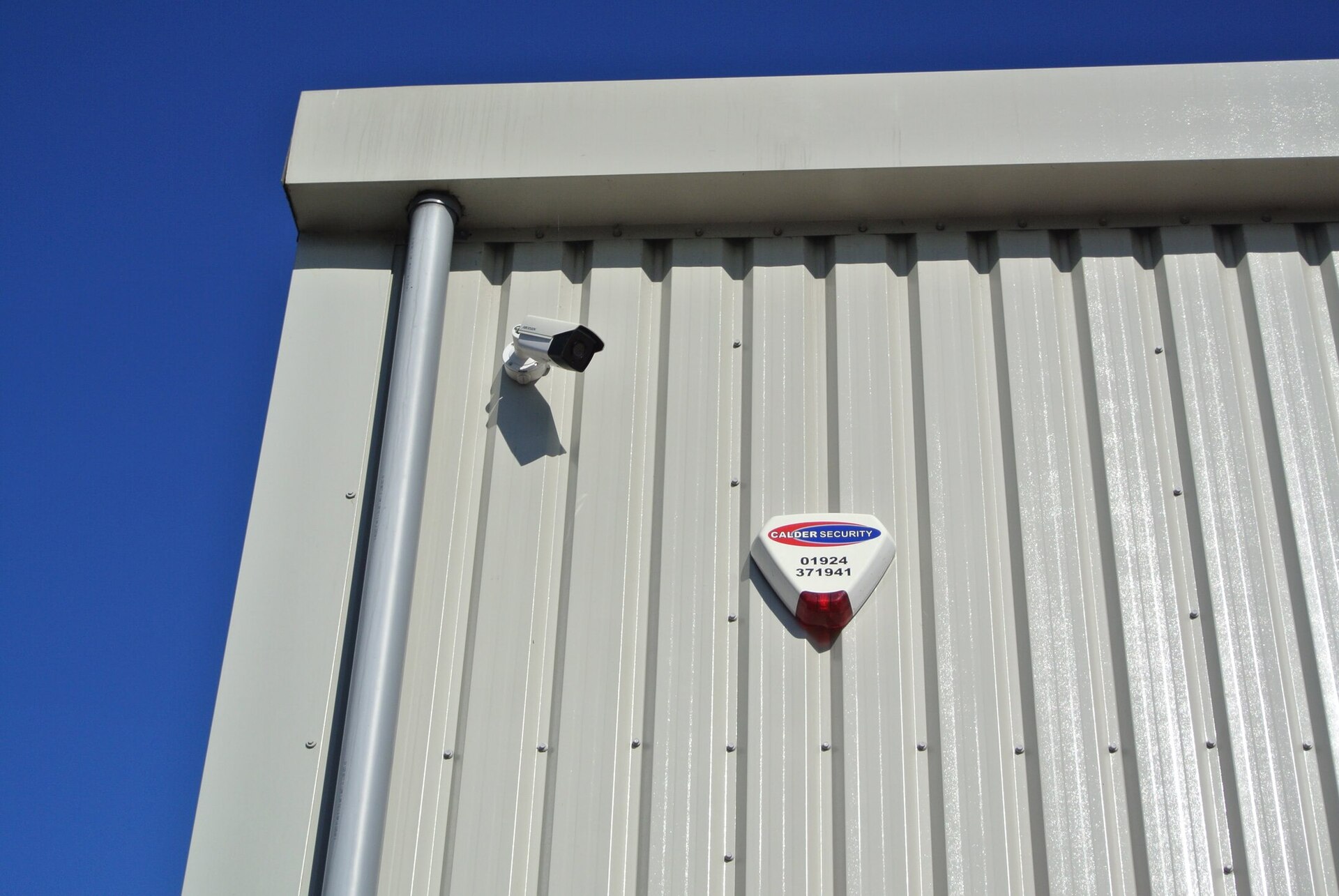

Home Security and Surveillance
What Is Local Burglar Alarm?
Modified: March 6, 2024
Learn about local burglar alarm systems for home security and surveillance. Find out how these alarms can protect your property and give you peace of mind.
(Many of the links in this article redirect to a specific reviewed product. Your purchase of these products through affiliate links helps to generate commission for Storables.com, at no extra cost. Learn more)
Introduction
Welcome to the world of home security and surveillance! In today’s fast-paced and digital age, it has become increasingly important to ensure the safety and protection of our homes and loved ones. Fortunately, advancements in technology have provided us with a wide range of options when it comes to home security systems. One such option is a local burglar alarm.
A local burglar alarm is designed to alert homeowners and authorities of any unauthorized entry into a property. It serves as a crucial deterrent to potential burglars and provides peace of mind to homeowners. In this article, we will explore the definition, working principles, benefits, drawbacks, factors to consider, common features, popular brands, cost, and installation and maintenance of local burglar alarms.
By understanding the intricacies of local burglar alarms, you can make an informed decision regarding the security needs of your home. Whether you reside in a house, apartment, or condominium, a local burglar alarm can offer added protection and help safeguard your belongings.
So, let’s dive into the world of local burglar alarms and uncover everything you need to know to make your home a safer place!
Key Takeaways:
- Local burglar alarms are security systems that detect unauthorized entry and alert occupants with loud sirens and flashing lights. They offer peace of mind and can integrate with other security features.
- Factors to consider before installing a local burglar alarm include property size, system scalability, sensor types, integration capabilities, budget, and reputation of the brand. Regular maintenance and testing are crucial for optimal performance.
Read more: What Is A Burglar Alarm System
Definition of Local Burglar Alarm
A local burglar alarm, also known as an intruder alarm, is a security device that is installed in residential or commercial properties to detect and notify the occupants of any unauthorized entry or intrusion. It is designed to prevent burglaries and protect property and lives.
Local burglar alarms typically consist of sensors, control panels, and audible or visual alert systems. The sensors are strategically placed in various areas of the property, such as doors, windows, and other points of entry. These sensors are triggered when there is a break-in attempt or any suspicious activity. Once the sensor detects such activity, it sends a signal to the control panel, which then activates an audible siren, strobe lights, or both, to alert the occupants and possibly scare off intruders.
One of the key features of a local burglar alarm is that it operates independently of a monitoring service. Unlike monitored alarm systems that are connected to a central monitoring station, local burglar alarms rely on the occupants of the property or the surrounding neighbors to respond to the alarm.
Local burglar alarms can be either wired or wireless. Wired systems require physical connections between the sensors, control panel, and alert systems, while wireless systems communicate using radio signals. Both types have their advantages and disadvantages, and the choice depends on factors such as the layout of the property, budget, and personal preferences.
In addition to detecting unauthorized entry, some local burglar alarms also include other features such as fire detection, smoke detection, and carbon monoxide detection. These additional features provide comprehensive protection for the property and its occupants.
Overall, local burglar alarms serve as a proactive security measure to protect homes and businesses from burglary and intrusion. By promptly alerting occupants of any unauthorized entry, they provide an opportunity to take appropriate action and ensure the safety and security of the premises.
How Local Burglar Alarms Work
Local burglar alarms work on a simple yet effective principle of detecting unauthorized entry and triggering an audible or visual alert to deter intruders and alert the occupants of the property. Let’s take a closer look at how these alarm systems operate:
1. Sensors: Local burglar alarms are equipped with various types of sensors that are strategically placed in different areas of the property. The most common sensors include door and window sensors, motion detectors, glass break sensors, and pressure sensors. These sensors are designed to detect any changes or disturbances in their respective areas. For example, door and window sensors are triggered when a door or window is opened or tampered with, while motion detectors detect movement within a designated area.
2. Control Panel: The sensors in a local burglar alarm system are connected to a control panel, which serves as the brain of the system. The control panel receives signals from the sensors when they are triggered and processes the information to determine if there is a potential threat. If a threat is detected, the control panel activates the alarm system.
3. Alarm Activation: When the control panel determines that there has been a breach in security, it activates the alarm system. This can be in the form of a loud siren, flashing lights, or a combination of both. The loud noise and visual indicators are intended to startle and deter intruders, alert the occupants of the property, and draw attention from neighbors or passersby.
4. Occupant Response: Once the local burglar alarm is activated, it is the responsibility of the occupants to respond to the situation. They should immediately assess the source of the alarm and take appropriate action. This may involve contacting the authorities, evacuating the premises, or checking for signs of intrusion.
5. Resetting the System: After the alarm has been triggered and the situation has been resolved, the local burglar alarm system needs to be reset. This can usually be done through the control panel. It is important to ensure that any issues or causes of the alarm activation are addressed before resetting the system to prevent false alarms in the future.
Overall, the functioning of a local burglar alarm system revolves around the detection of unauthorized entry or suspicious activity and the prompt activation of an audible or visual alarm to deter intruders and notify the occupants. The effectiveness of the system lies in its ability to quickly and accurately detect threats and provide a timely response to ensure the safety and security of the property.
Benefits of Local Burglar Alarms
Local burglar alarms offer numerous benefits when it comes to enhancing the security of your home or business. Let’s explore some of the key advantages of installing a local burglar alarm system:
- Deterrence: One of the primary benefits of local burglar alarms is their ability to deter potential intruders. The presence of visible alarm systems, such as outdoor cameras or alarm signs, can act as a strong deterrent by signaling to would-be burglars that the property is protected and under surveillance.
- Immediate Notification: Local burglar alarms provide immediate notification in the event of a break-in or unauthorized entry. The audible siren and flashing lights not only alert the occupants of the property but also attract attention from neighbors or anyone in the vicinity, increasing the chances of catching the intruder and preventing further harm.
- Peace of Mind: Installing a local burglar alarm system can provide peace of mind to homeowners and business owners. It offers a sense of security knowing that their property is protected and that they will be alerted if any suspicious activity occurs. This peace of mind allows individuals to feel more at ease and focus on other aspects of their lives.
- Insurance Benefits: Having a local burglar alarm system in place can often lead to reduced insurance premiums. Insurance companies consider properties with robust security measures to be less risky, resulting in lower insurance rates. By investing in a local burglar alarm, homeowners and businesses can not only enhance their safety but also save money in the long run.
- Integration with Other Security Systems: Local burglar alarms can be integrated with other security systems to provide a comprehensive security solution. They can be connected to CCTV cameras, access control systems, and even home automation systems, allowing users to monitor their property remotely, control various features, and receive alerts through their smartphones or other devices.
- Customization and Scalability: Local burglar alarm systems are highly customizable and can be tailored to suit individual security needs. Whether you have a small apartment or a large estate, the system can be designed to cover multiple entry points and sensitive areas. Additionally, these systems are scalable, meaning they can be expanded or modified as your security requirements evolve over time.
Overall, local burglar alarms offer a wide range of benefits, from deterring potential intruders to providing immediate notification and peace of mind. Investing in a local burglar alarm system is a proactive step towards enhancing the security and protection of your property and loved ones.
Drawbacks of Local Burglar Alarms
While local burglar alarm systems offer numerous benefits, it is important to also consider the potential drawbacks before making a decision. Here are some of the drawbacks associated with local burglar alarms:
- Lack of Professional Monitoring: Unlike monitored alarm systems that are connected to a central monitoring station, local burglar alarms rely on the occupants or the nearby neighbors to respond to the alarm. This means that there is no professional monitoring service to quickly assess the situation and contact the authorities if needed.
- Potential False Alarms: Local burglar alarms can be triggered by false alarms, resulting in unnecessary panic and inconvenience. Factors such as pets, unintentional activation of sensors, or even environmental conditions can cause false alarms. Dealing with false alarms can be time-consuming and may lead to individuals becoming desensitized to the alarm, potentially compromising their response to a genuine emergency.
- Reliance on Power Supply: Local burglar alarm systems typically rely on electricity to function. In the event of a power outage, the system may be rendered ineffective unless there is a backup power source such as a battery. It is crucial to ensure that the backup power supply is sufficient to keep the alarm system operational for an extended period during a power failure.
- Potential Vulnerabilities: Like any other electronic system, local burglar alarms can be vulnerable to hacking or tampering. Sophisticated intruders may be able to disable or bypass the alarm system, rendering it ineffective. It is important to choose a reputable and reliable alarm system provider to minimize the risk of vulnerabilities.
- Installation and Maintenance Costs: While the cost of local burglar alarm systems can vary depending on the brand and features, there is still an upfront cost associated with installation. Additionally, there may be ongoing maintenance and monitoring fees, depending on the chosen system. It is essential to consider these costs and factor them into your budget.
- Limited Functionality: Local burglar alarms primarily focus on detecting unauthorized entry and triggering an alert. While some systems offer additional features such as fire detection, smoke detection, or carbon monoxide detection, they may not provide the same level of functionality as specialized systems dedicated to those specific purposes. If you require comprehensive security beyond burglary detection, you may need to invest in additional systems.
It is important to weigh the benefits against the drawbacks when considering a local burglar alarm system. Despite these potential drawbacks, many individuals find that the added security and peace of mind outweighs the limitations of local burglar alarms.
Read more: What Is Central Burglar Alarm
Factors to Consider before Installing a Local Burglar Alarm
Installing a local burglar alarm system is a significant decision when it comes to enhancing the security of your home or business. Before making the investment, it is essential to consider several factors to ensure that you choose the right system for your specific needs. Here are some key factors to consider:
- Property Size and Layout: Assess the size and layout of your property to determine the number of entry points and areas that need to be covered by the alarm system. This will help you determine the type and quantity of sensors and control panels required.
- System Scalability: Consider whether the local burglar alarm system can be easily expanded or modified in the future to accommodate any changes to your property or security requirements. Scalability ensures that your system can grow with your needs.
- Wired or Wireless: Decide whether you prefer a wired or wireless system. Wired systems require physical connections between sensors and control panels, while wireless systems communicate through radio signals. Wireless systems offer flexibility and easier installation but may be less reliable in areas with poor signal strength.
- Sensor Types: Familiarize yourself with the different types of sensors available for local burglar alarms. This includes door and window sensors, motion detectors, glass break sensors, and pressure sensors. Assess which sensors are most suitable for your property and desired level of security.
- Integration with Other Systems: Determine whether you want the local burglar alarm system to integrate with other security systems, such as CCTV cameras, access control systems, or home automation systems. Integration can provide enhanced functionality and comprehensive security.
- Alarm Volume and Notifications: Consider the volume of the alarm and its ability to reach the occupants and nearby neighbors. Additionally, examine the options for notifications such as SMS alerts, phone calls, or push notifications to ensure that you receive timely notifications of any alarm activations.
- Budget: Determine your budget for the local burglar alarm system, taking into account the initial installation costs, ongoing maintenance costs, and any monitoring fees. It is important to strike a balance between your security needs and budget constraints.
- Reputation and Reliability: Research and choose a reputable and reliable local burglar alarm system provider. Read reviews, seek recommendations, and ensure that the company has a history of delivering quality products and responsive customer support.
- Local Regulations and Permits: Check if there are any local regulations or permits required for installing a local burglar alarm system in your area. Some jurisdictions may require specific permits or have restrictions on certain alarm features.
By considering these factors, you can make a well-informed decision and choose a local burglar alarm system that meets your security needs, budget, and property requirements. Remember to conduct thorough research, consult with professionals if necessary, and prioritize your peace of mind and the safety of your property and loved ones.
Common Features of Local Burglar Alarms
Local burglar alarms come equipped with a variety of features that enhance their ability to detect unauthorized entry and protect your property. While specific features can vary between different alarm systems, here are some common features you can expect to find:
- Door and Window Sensors: These sensors are placed on doors and windows to detect any opening or tampering. They trigger the alarm when a door or window is breached, alerting you to a possible break-in.
- Motion Detectors: Motion detectors use infrared or microwave technology to detect movement within a designated area. They are commonly used in indoor spaces and trigger the alarm when motion is detected where it shouldn’t be.
- Glass Break Sensors: Glass break sensors can detect the specific sound frequency produced by shattering glass. They are placed near windows and glass doors and are designed to activate the alarm when glass breakage is detected.
- Keychain Remote Control: Many local burglar alarms come with a keychain remote control that allows you to arm and disarm the system easily. This convenient feature enables you to access the system from a distance, such as when arriving or leaving your property.
- Keypad Control Panel: The keypad control panel is the interface for controlling and programming the alarm system. It enables you to arm or disarm the system using a unique code. Some advanced systems may also feature touchscreens for easier operation.
- Audible Alarm: An audible alarm, such as a loud siren, is a standard feature in local burglar alarms. It is activated when a breach occurs, serving as a deterrent to intruders and notifying you and others nearby of the potential threat.
- Strobe Lights: In addition to the audible alarm, some local burglar alarm systems may include strobe lights that flash when the alarm is triggered. These lights attract attention and provide a visual indication that an intrusion is occurring.
- Battery Backup: To ensure the alarm system remains functional during power outages, many local burglar alarms are equipped with battery backup. This backup power supply keeps the system operational, allowing it to continue providing protection even when the main power source is interrupted.
- Entry and Exit Delay: Entry and exit delay is a feature that allows you to enter or leave your property without triggering the alarm immediately. It gives you a few moments to disarm or arm the system before it becomes fully activated.
- Zone Setting: Zone setting allows you to divide your property into different areas or zones, each with its own set of sensors. This feature enables you to monitor specific areas more closely and customize the alarm response based on the zone that is breached.
These are just some of the common features you may find in local burglar alarm systems. Depending on the brand and model, there may be additional features available, such as wireless connectivity, smartphone integration, or remote monitoring capabilities. Consider your specific security needs and desired level of convenience when choosing a local burglar alarm system.
When choosing a local burglar alarm, look for a system that includes motion sensors, door and window sensors, and a loud siren. Make sure it’s monitored by a professional service for added security.
Popular Brands of Local Burglar Alarms
When it comes to choosing a local burglar alarm system, there are several reputable brands that offer reliable and effective solutions. Here are some popular brands known for their quality and innovation in the home security industry:
- ADT: ADT is a well-known and highly trusted brand in the home security industry. They offer a range of local burglar alarm systems that incorporate advanced technology and provide 24/7 professional monitoring services. ADT’s systems are known for their reliability, ease of use, and comprehensive security features.
- Vivint: Vivint is a leading provider of smart home security solutions, including local burglar alarm systems. Their systems are known for their integration with home automation features, allowing users to control and monitor their security system remotely through their smartphones or other smart devices.
- Ring: Ring is a popular brand that specializes in video doorbells and home security products. They offer local burglar alarms that integrate with their wider ecosystem, providing homeowners with a comprehensive security solution. Ring’s systems are known for their ease of installation, affordability, and user-friendly mobile app.
- SimpliSafe: SimpliSafe is known for its DIY approach to home security, offering affordable and customizable local burglar alarm systems. Their systems are wireless and easy to install, making them suitable for renters and homeowners alike. SimpliSafe’s systems also provide optional professional monitoring services.
- Abode: Abode is a top brand that offers local burglar alarm systems with a focus on user-friendly DIY installation and flexible customizability. Their systems can be integrated with other smart home devices and provide various sensors and detectors for comprehensive security coverage.
- Honeywell: Honeywell is a trusted name in the security industry and offers a range of local burglar alarm systems. Their systems are known for their reliability, compatibility with other Honeywell products, and professional-grade sensors and detectors.
- Nest: Nest, a subsidiary of Google, specializes in smart home products, including local burglar alarm systems. Their systems can be easily integrated into a wider ecosystem of Nest devices, providing users with a seamless and connected home security experience.
These are just a few of the many popular brands available in the market. When choosing a local burglar alarm system, it is important to consider your specific security needs, budget, and desired features. Conduct thorough research, read customer reviews, and compare the offerings of different brands to find the one that best suits your requirements.
Cost of Local Burglar Alarm Systems
The cost of local burglar alarm systems can vary depending on several factors, including the brand, features, size of the property, and installation requirements. It is important to consider both the upfront cost and any additional fees associated with the system. Here’s a breakdown of the costs you can expect:
- Equipment Cost: The cost of the alarm equipment is likely to be the largest component of the overall cost. This includes the control panel, sensors, keychain remote control, and any other devices specific to the chosen system. The cost of the equipment can range from a few hundred dollars for basic systems to several thousand dollars for more advanced setups.
- Installation Cost: If you opt for professional installation, there will be an additional cost. The installation fee typically includes the labor required to mount and connect the alarm system components, ensuring that everything is properly set up. Installation costs can vary depending on the complexity of the system and the size of the property.
- Optional Features: Some local burglar alarm systems may offer optional features or accessories that come at an additional cost. These can include items such as extra sensors, security cameras, smart home integration devices, or monitoring services.
- Monitoring Fees: If you choose to have your local burglar alarm system professionally monitored, there may be monthly or annual monitoring fees. These fees cover the service of a monitoring center that will respond to alarm activations and contact the necessary authorities on your behalf. The cost of monitoring can range from $15 to $50 per month, depending on the level of service and the company you choose.
- Maintenance and Service: It is important to consider ongoing maintenance and service costs when budgeting for a local burglar alarm system. While some systems may require minimal maintenance, others may need regular inspections or software updates to ensure optimal performance. Additionally, if there’s a warranty, it is essential to understand what is covered and any associated costs for repairs or replacements.
Overall, the cost of a local burglar alarm system can range from a few hundred to a few thousand dollars, depending on the factors mentioned above. It is advisable to obtain quotes from multiple alarm system providers to compare prices and services. Consider the level of security needed for your property and ensure that the system you choose is reliable, user-friendly, and offers the features you require within your budget.
Read more: What Is A Direct Burglar Alarm?
Installation and Maintenance of Local Burglar Alarms
The installation and maintenance of local burglar alarm systems play a crucial role in ensuring their effectiveness and reliability in safeguarding your property. Let’s delve into the key aspects of installation and maintenance:
Installation
When it comes to installing a local burglar alarm system, you have two main options: professional installation or a DIY approach. Here’s a breakdown of each:
- Professional Installation: Many alarm system providers offer professional installation services. Trained technicians will visit your property, assess your security needs, and strategically install the sensors, control panels, and other components. Professional installation ensures that the system is properly set up, reducing the risk of installation errors and ensuring optimal functionality. However, it typically incurs additional costs.
- DIY Installation: Some local burglar alarm systems are designed for easy DIY installation. These systems often come with detailed instructions and user-friendly interfaces, allowing homeowners to install the system themselves. DIY installation can save money, but it requires careful attention to detail to ensure that all sensors are correctly placed and connected. It’s important to thoroughly read the instruction manual and follow the manufacturer’s guidelines.
Maintenance
Maintaining your local burglar alarm system is essential to keep it in top working condition and ensure its reliability. Here are some key maintenance practices:
- Regular Testing: It is important to regularly test your alarm system to verify that all components are functioning correctly. Most systems have a testing mode that allows you to simulate an alarm activation. Perform these tests according to the manufacturer’s instructions to ensure the sensors, control panels, and alert systems are working properly.
- Battery Replacement: If your local burglar alarm system has a battery backup, it is crucial to regularly check and replace the batteries as needed. Weak or dead batteries can compromise the system’s ability to operate during a power outage, so it is important to follow the manufacturer’s recommendations for battery replacement intervals.
- Keep Sensors Clean and Adjusted: Dust and debris can interfere with the functioning of sensors over time. Regularly inspect and clean the sensors to ensure they are free from any obstructions that could affect their accuracy. Additionally, check that sensors are properly aligned and adjusted to maintain optimal sensitivity.
- Software Updates: Some local burglar alarm systems may require periodic software updates to ensure they are running the latest firmware. Check for updates provided by the manufacturer and follow the instructions for installing them to benefit from any improvements or bug fixes.
- Periodic Professional Maintenance: Consider scheduling periodic professional maintenance for your alarm system. Trained technicians can inspect the components, perform any necessary cleaning or adjustments, and ensure that the system is operating at its best. This can help identify and address any potential issues before they become major problems.
By following proper installation and maintenance practices, you can maximize the effectiveness and lifespan of your local burglar alarm system. Whether you opt for professional installation or DIY, and regardless of the level of maintenance you perform yourself, prioritize the security of your property and the safety of your loved ones by ensuring your alarm system is properly installed and regularly maintained.
Conclusion
Investing in a local burglar alarm system is a proactive step towards enhancing the security and protection of your home or business. These systems serve as a crucial deterrent to potential intruders and provide peace of mind by alerting occupants of any unauthorized entry. Throughout this article, we explored the definition, working principles, benefits, drawbacks, factors to consider, common features, popular brands, cost, and installation and maintenance of local burglar alarm systems.
Local burglar alarm systems offer numerous benefits, including deterring potential intruders, providing immediate notification in case of a break-in, and offering peace of mind to homeowners and business owners. They can be customized to suit various property sizes and layouts, and can often be integrated with other security systems for comprehensive protection. However, it is important to consider their potential drawbacks, such as reliance on occupants or neighbors to respond to alarms and the occurrence of false alarms.
Before installing a local burglar alarm system, it is essential to evaluate factors such as property size and layout, system scalability, sensor types, integration capabilities, and your budget. Additionally, consider the reputation and reliability of the brand, local regulations and permits, and ongoing maintenance and monitoring fees.
Popular brands in the market, such as ADT, Vivint, Ring, SimpliSafe, Abode, Honeywell, and Nest, offer a range of local burglar alarm systems with various features and functionalities. The cost of installing a local burglar alarm system can vary based on equipment, installation, and optional features. It is crucial to budget for both upfront costs and ongoing maintenance, monitoring, and service fees. Regular maintenance, testing, battery replacement, and professional inspections are essential to ensure the effectiveness and reliability of the alarm system.
In conclusion, local burglar alarm systems provide an added layer of security and peace of mind for homeowners and businesses. By carefully considering your security needs, budget, and the features provided by different alarm systems, you can make an informed decision that suits your specific requirements. Whether you choose professional installation or opt for a DIY approach, prioritizing the maintenance and regular testing of your alarm system will ensure its optimal performance in detecting and deterring unauthorized entry.
Frequently Asked Questions about What Is Local Burglar Alarm?
Was this page helpful?
At Storables.com, we guarantee accurate and reliable information. Our content, validated by Expert Board Contributors, is crafted following stringent Editorial Policies. We're committed to providing you with well-researched, expert-backed insights for all your informational needs.
